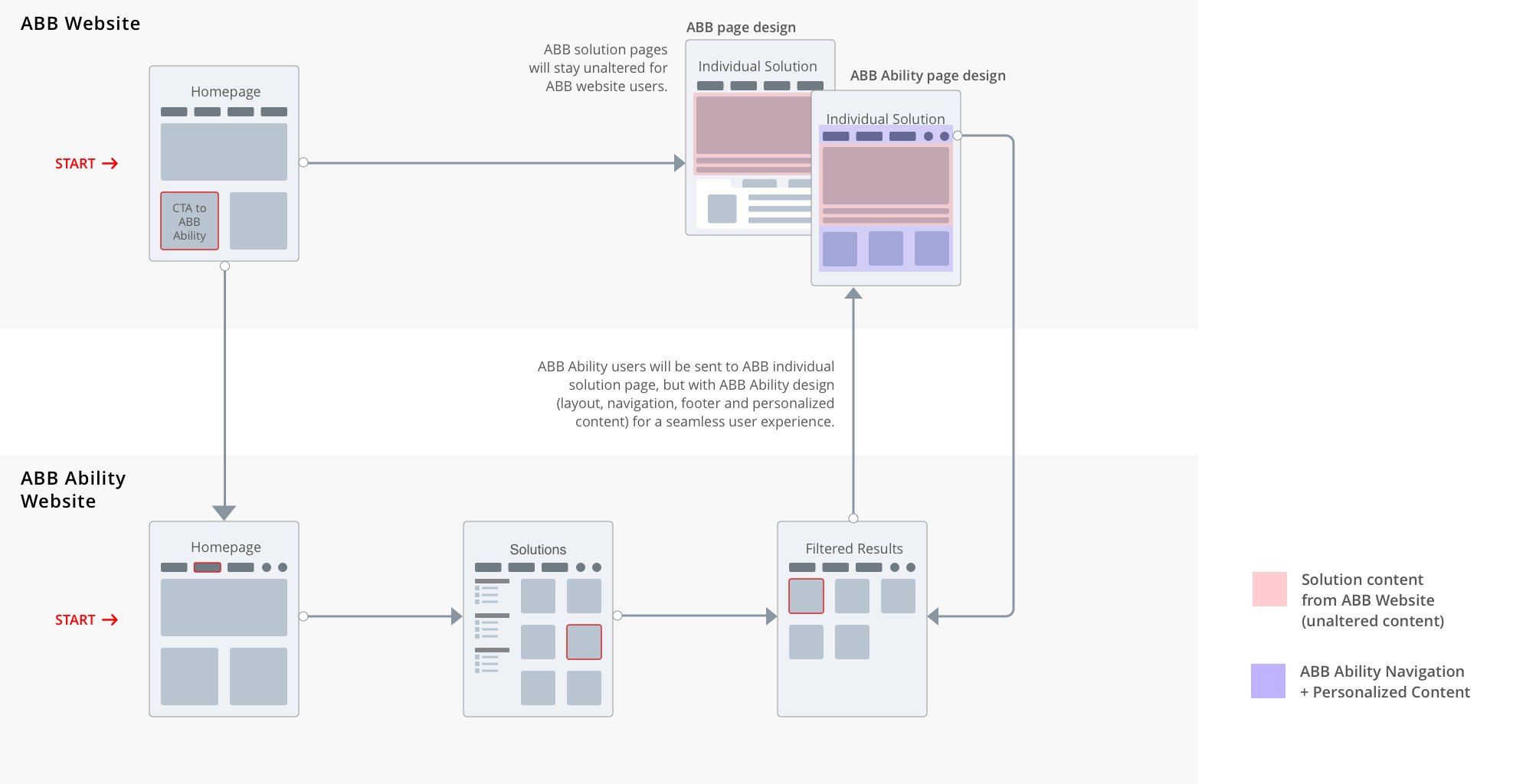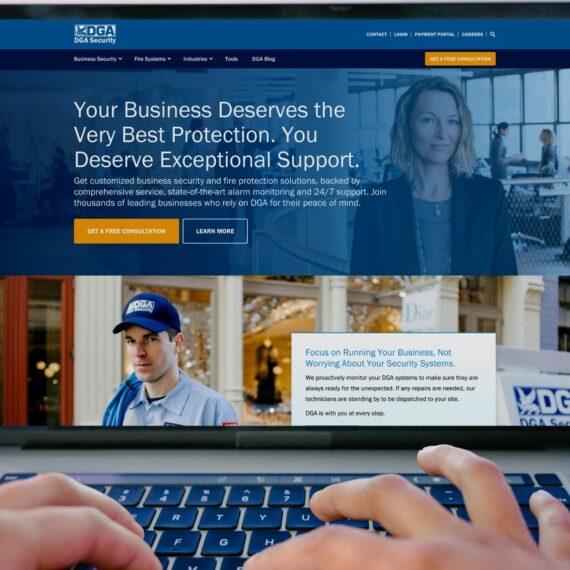Digital transformation website



ABB Ability is a young brand of ABB, a technology leader in electrification and automation. In partnership with marketing agency Camp Creative, our goal was to build a stand-alone digital hub for ABB Ability while maintaining connectivity with the existing ABB website. The objectives were to design a user-centered experience to raise awareness about digital transformation and educate customers about ABB Ability solutions.
Solution
I gathered information on digital transformation, ABB, and ABB Ability by conducting stakeholder interviews and a two-day discovery workshop. The interviews highlighted the challenges that ABB employees had communicating ABB Ability’s value proposition and proposing digital transformation solutions to them. Using the information gathered, I created a document outlining our proposed technical solutions, content strategy, and information architecture.
With client approval, we designed a website that targeted the top of the marketing funnel, with a focus on raising awareness of ABB as a leader in digital transformation. The website also provided targeted digital transformation information for users from different industries and a searchable, filterable, and sortable catalogue of solutions.
Role
Ast the only UX designer, I was responsible for designing the entire user experience for this project. I collaborated with another designer on the visual mockups.
Client
ABB Ability
Agency
Camp Creative
01. Research and discovery workshops
To begin the project, we conducted interviews with multiple ABB employees and digital transformation leaders. The interviews revealed the following insights:
- Customers had limited awareness of ABB Ability solutions
- The content related to digital transformation and ABB Ability solutions originated from various business units, leading to an inconsistent message
- The executive team’s definition of ABB Ability and its value proposition was abstract, vague, and philosophical, making it challenging for customers to comprehend
- Employers lacked a cohesive message to communicate ABB Ability’s value proposition, making it difficult to convey the brand’s worth to clients
- Although there were over 200 ABB Ability solutions, there was no centralized public database to locate them
- Customers interested in a solution were unsure of the sales process, who to contact, or the next steps to take
Additionally, our research involved analyzing the websites of competing companies in the digital transformation space for electrification companies.


To further the discovery process, I facilitated a two-day workshop with three ABB company employees and the agency’s creative team including content strategist, engineer, copywriter, and SEO analyst.
The objectives of the workshop were as follows:
- Gain a deeper understanding of the relationship between ABB as a parent brand and ABB Ability
- Enhance our comprehension of digital transformation within the field of electrification and automation companies
- Learn more about ABB’s customers, specifically those who may be interested in digital transformation
- Identify the website stakeholders’ goals and expectations
- Recognize any technical limitations since we had to redirect customers from the ABB Ability site to the ABB parent site
- Familiarize ourselves with the ABB brand and guidelines that we must adhere to.
02. Proposed solutions
After gathering a lot of information from interviews and a workshop, I organized my notes visually into a mind map that helped me keep track of everything during the project.
Next, I created a document that summarized the workshop findings and our initial strategy to make sure we were on the same page as the client’s expectations. The document entailed information about users, personas, user journeys, proposals for defining ABB Ability, information architecture encompassing site maps, content strategy maps, and proposals for technical solutions.


When I created a user journey, I realized how crucial it is to provide tailored content for users based on their industry, especially when it comes to digital transformation. This means including useful items like FAQs, case studies, and industry-specific ABB Ability solutions. I also wanted to explain ABB Ability’s value proposition in an easy-to-understand way and show that ABB is a leader in digital transformation.

I generated a site map outlining the pages we proposed to include. These pages encompassed topics such as awareness, featuring detailed explanations of ABB Ability, its value proposition, and digital transformation. Additionally, I included pages where users could select their industries and access information on digital transformation trends and solutions tailored to their specific industry. Notably, I incorporated a solutions catalog that allowed users to search, filter, and sort solutions as needed.

In addition to the site map, I developed a content strategy map that corresponded with our site map, facilitating our content team’s identification of the sources of their content. The map featured a color-coded legend to classify different content types.
I created visual representations of our technical solutions to help ABB understand our proposal for developing solution detail pages on the ABB Ability website. This would eliminate the need for ABB employees to update solution content on both the ABB parent website and the ABB Ability website, thereby keeping users on the ABB Ability website and preventing unnecessary movement between the two sites.

03. Wireframes
After the client approved our proposed technical solutions and sitemap, I proceeded to generate wireframes displaying the intended content for each page.













